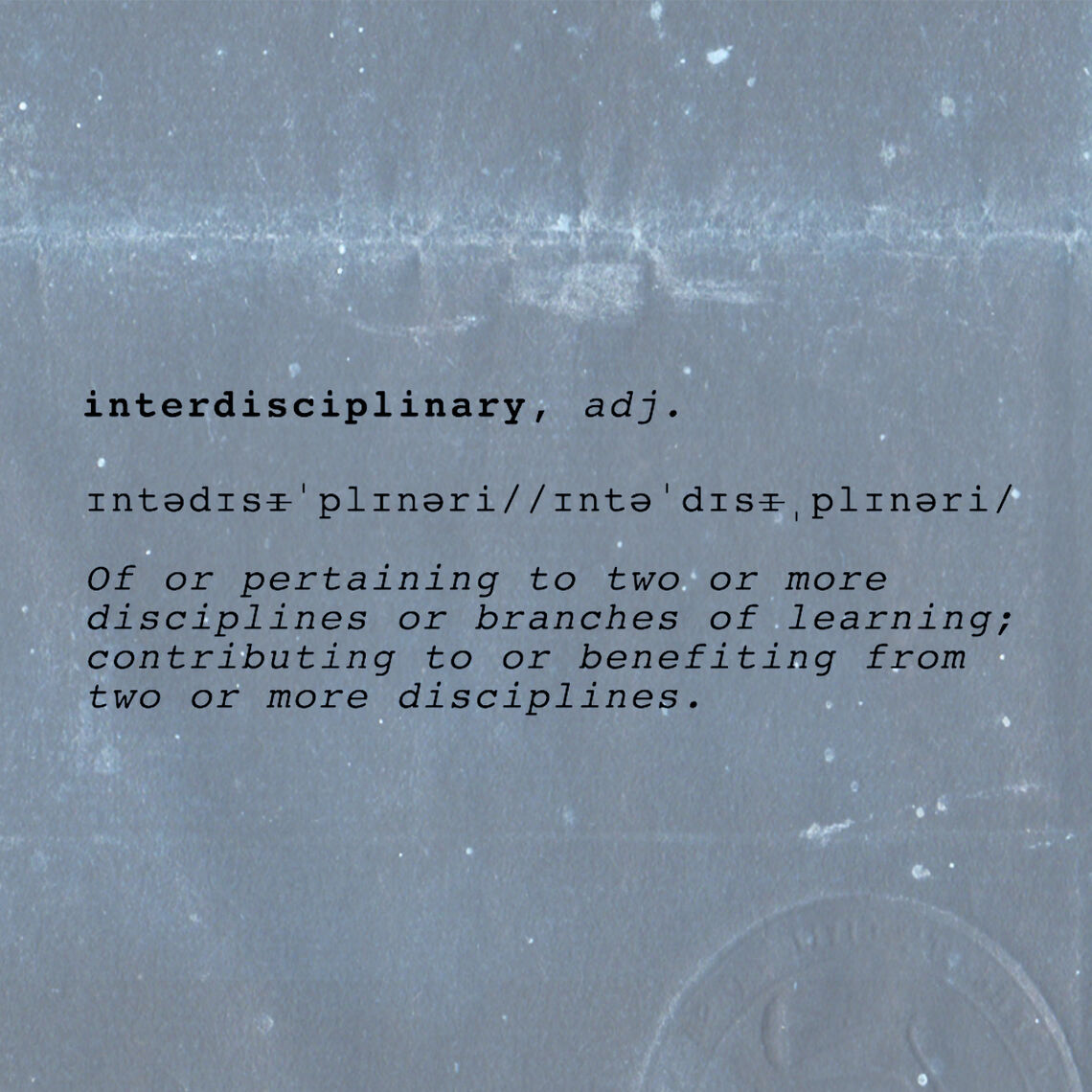With etymological origins in Latin, the prefix inter- is a preposition and adverb, meaning ‘between, among, amid, in between, or in the midst.’ When entered into combination and prefixed with adjectives, like “disciplinary,” the resultant prepositional relation establishes an interconnectedness that describes a relationship between two or more disciplines. (Oxford English Dictionary, 2020).
The word was first published in the Oxford English Dictionary in 1937, predicated on its publication in the Journal of Educational Sociology in 1937, which introduced “programs of study... for training of an inter-disciplinary nature” (OED, 2020). Throughout the 1960s and 70s, the word was increasingly used in academic settings to describe studies and research at the intersect between multiple fields. In the architecture and design industries, the word “interdisciplinary” has been increasingly popularized and become commonplace, if not trite, since the 1990s. Moreover, in our increasingly digitized world, where access to information is instantaneous and unlimited, we have become so inundated with words on a daily basis that many of the words in our common vocabularies have succumbed to a frequency and inaccuracy of their use that risks eroding their impact. Has this escalating usage and oversaturation fatigued our understanding of the word and weakened its significance?
I have long been a strong proponent of the importance of interdisciplinarity in the design profession, but I would also argue that our overuse and misuse of the word has made it mundane and meaningless. Design firms that promote their “interdisciplinary” approach likely strive to unveil a layered depth in their practice that requires a more robust specificity, yet, because the word has become so undistinguished in our architectural jargon, I challenge us to revisit what defines WRT as uniquely interdisciplinary.
In expressing ourselves semantically, especially in the design profession where fads and styles not only plague our lexicon, but also the graphics and images with which we visualize and represent our medium, we must express our interdisciplinary approach as a uniting element in our larger ethos and practice. By no means do I intend to say that an oversaturation of words or visual tools is necessarily bad or good, but oversaturation has a way of tricking our minds into thinking that one word or image might have a collective meaning in our popular imagination. That risk, of commonality and collective meaning, is what yields the ambiguity of the word.
If we are to be resilient in our efforts to precisely describe our firm, our people, and our work as interdisciplinary, we must speak with a clarity and intentionality. Rather than saying we are interdisciplinary moving forward, let us explain what makes us truly interdisciplinary, beyond the fact that we are a group of professionals from diverse backgrounds, disciplines of study, and areas of practice. Let us focus on the diversity of our perspectives shaped from years of honing our different practice areas. Let us celebrate the melding of those perspectives to arrive at solutions that provide value and improve our society. We are an interdisciplinary firm not just because we are a team comprised of architects, landscape architects, planners, and urban designers, but because we are a practice of people that intentionally bring an interdisciplinary expertise, process, and understanding to our work. The way we engage and work with communities and clients, and the ways in which we collaborate and team with experts in fields that enhance our own design decisions, makes us interdisciplinary. So, in the future, while interdisciplinary may describe us accurately at the surface level, let us also venture to share in the who, what, why, and how our interdisciplinarity as individuals relates to a collective and diverse practice.
